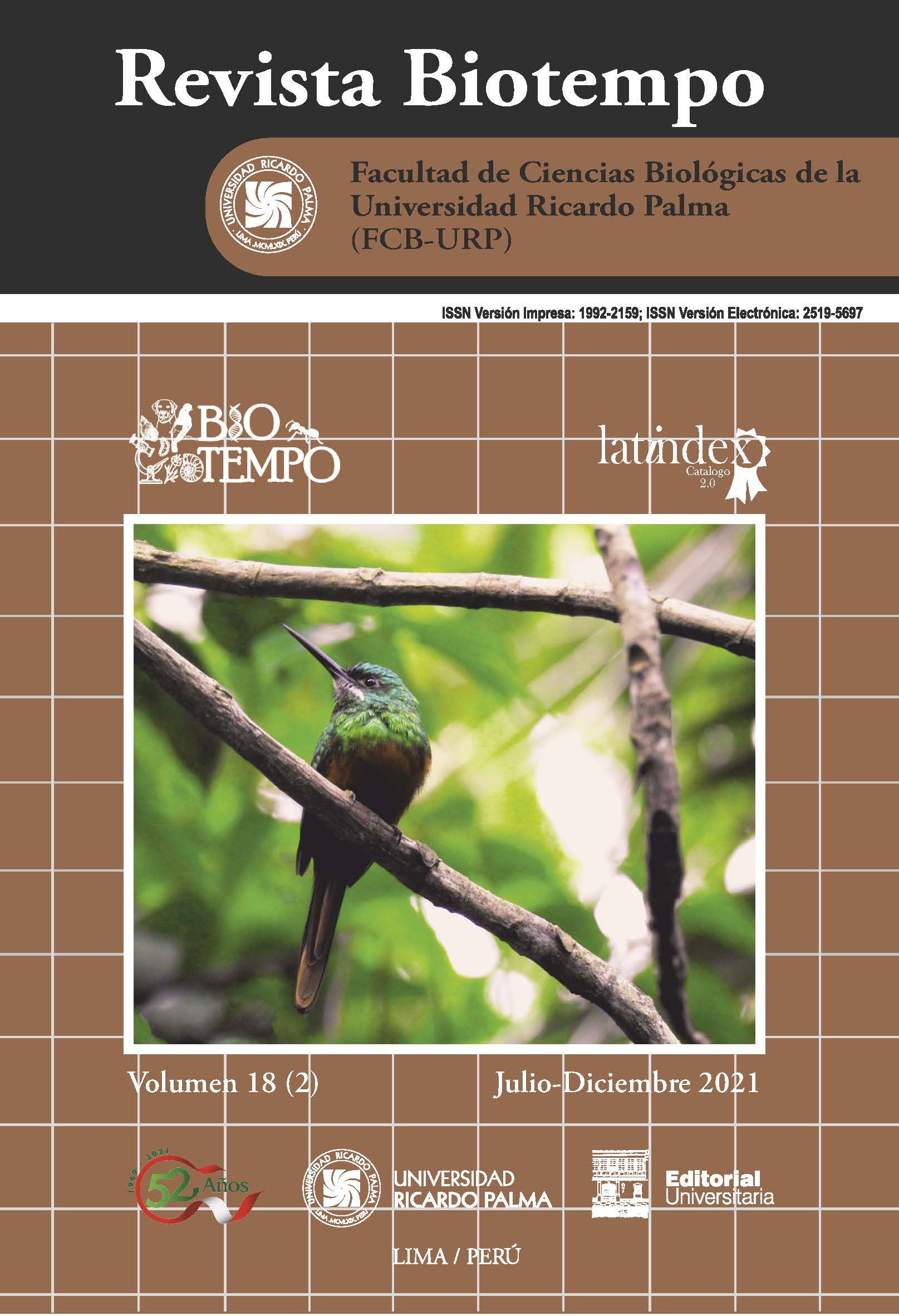THE PIGEON (COLUMBA LIVIA GMELIN, 1789): BIOLOGY, STRUCTURAL DETERIORATION AND MAIN ZOONOTIC DISEASES
DOI:
https://doi.org/10.31381/biotempo.v18i2.4093Keywords:
Biodeterioration, Columba livia, Public Health, Structural Deterioration, ZoonosisAbstract
This review article presents general information about the pigeon (Columba livia Gmelin, 1789). It emphasizes the characteristics of its biology as the cause of structural deterioration and as a reservoir of multiple zoonotic agents such as viruses, bacteria, fungi, protozoa, endoparasites and ectoparasites as well as a source of antigens that would be related to various diseases and allergies that can occur in the man. Th e objective of this systemic review of the literature was to review the biological aspects related to the pigeon, the capacity to cause structural and environmental deterioration, and the transmission of zoonotic diseases. Th erefore, a systematic spatio-temporal study of the literature from January 1984 to April 2021 was carried out to review the biological aspects related to the pigeon, the ability to cause structural and environmental deterioration, and the transmission of zoonotic diseases. Firstly, the direct relationship between pigeon droppings and structural and environmental deterioration was explored. Secondly, the high risk of exposure for the development of diseases caused by zoonotic agents typical of pigeons was examined. A systematic bibliographic search of original text articles in English and Spanish was carried out through the search engines Web of Science, Scopus, PubMed, Science Direct, Springer, Proquest and Google Scholar. Of 320 articles describing the pigeon and its relationship to zoonotic diseases and structural and environmental deterioration, 72 were used for data extraction. Th e search results indicate a direct relationship between pigeon droppings and structural and environmental deterioration. Likewise, there is high risk of exposure for the development of diseases caused by zoonotic agents typical of pigeons. In conclusion, pigeon droppings are a biological trigger for zoonotic diseases and for structural and environmental deterioration in the city.










